Solid as a Rock
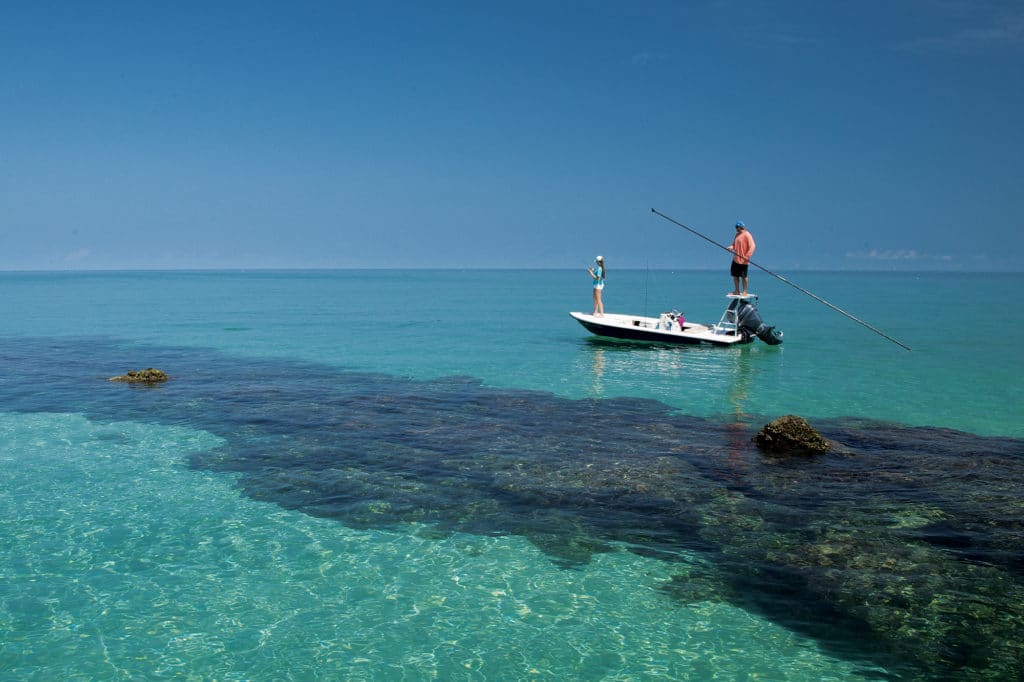
“Fishing the rocks” has several meanings, which vary depending on the angler. “Rock piles” are made up of massive boulders that can form rock gardens, plentiful along Northeast beaches. In the Pacific, rock piles might be “boiler rocks,” the common term for rocky coastal headlands battered by waves; these are the formations that occur naturally near shorelines, attracting bottomfish galore. Artificial reef materials such as bridge rubble fall under the “rock” moniker too. And lastly, while coral heads within patch reefs in places like the Florida Keys are definitely not rocks, that doesn’t stop anglers from fishing them as though the reefs were made from stone.
As it turns out, techniques for fishing the rocks vary for everyone. I sought out top tactics for fishing such stand-alone structure, tapping three dedicated rock jockeys who fish distinct environments. Their combined insight provides a helpful playbook to conquer the soldiers that guard these underwater castles.
Position Matters
Don’t take yourself out of the game before you start. Anchoring in the correct spot is paramount to success when rock-pile fishing, says Capt. Dave Hansen, a Southern California captain who teaches anglers how to fish aboard their own personal boats.
“Back the boat right up to the rocks, but don’t anchor on top of it,” says Hansen. “I often fish the big [boulders] along the coast, and if you’re [marking] a specific boulder on the meter to fish, chances are you’re already out of position.”
Instead, consider and counter wind strength and direction. Notice how the current affects the way the boat sits at anchor. Depending on the depth, account for how long it might take your bait to reach the structure. Hansen prefers a sensitive presentation, opting for a sinker on his leader that slides directly to his baited hook, often called a knocker rig in Southeastern states.
He also favors a “downhill current,” headed from L.A. to San Diego, but points out that select areas along the California coast are best with an “uphill current.” Water movement is vital, he says; otherwise, fish tend to simply stop feeding.
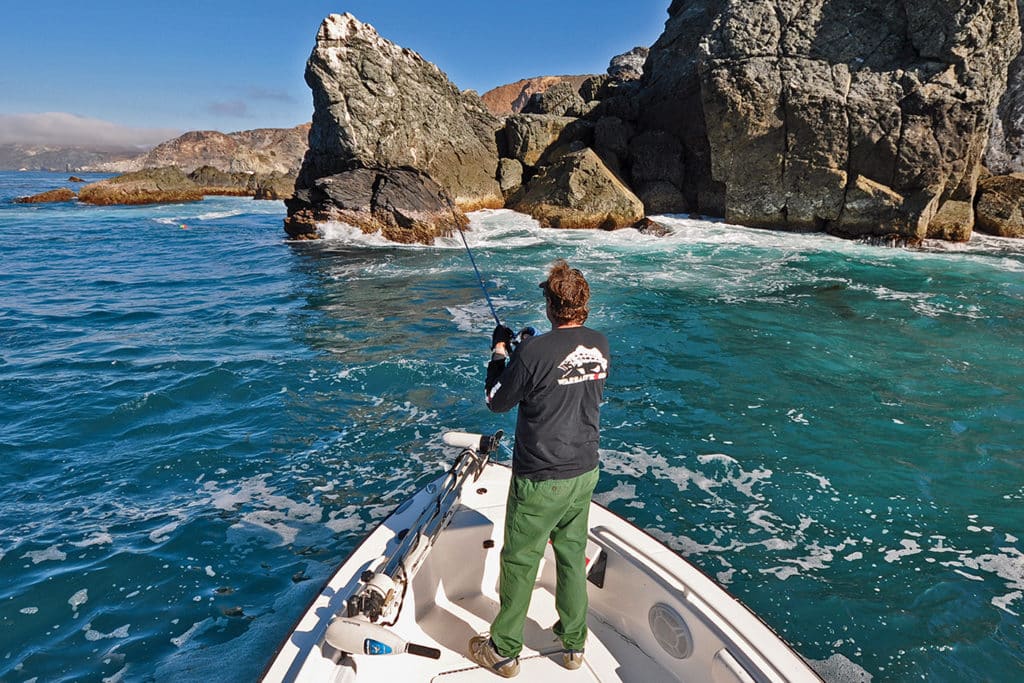
“Near the boiler rocks, tides matter more than currents,” says Hansen. “There I prefer the higher, outgoing tides for the rocks closest to shore.” An outgoing tide pushes the boat away from the rocks safely rather than sucking it toward the shoreline.
“Establish yourself and make sure to anchor facing into the current,” says Hansen. “I’ll position my boat sometimes four boatlengths from the structure, consistently out-fishing boats nearby that are drifting or out of position.”
Once settled, Hansen fishes mostly live bait for species such as yellowtail and calico bass, but also targets smaller sargo and sculpin with squid strips in colder temperatures. For Hansen, fishing means staying active, so he drops the bait methodically to the bottom, waiting for the bite on the drop, but also slowly works the bait back to the surface.
“Once the water warms up to 65 degrees, calico bass and yellowtail are the top targets,” he says. “They’ll get into the midwaters, where anglers can cast iron, live baits and plastics to them. I chum heavily so there’s a high prey‑density level in the water.”
Not being on top of the rock gives anglers a chance to pull a big yellow away from the structure. And with the last two years seeing unusually warm waters all year long, California anglers have maximized on the unprecedented yellowtail bite close to home.
If You Chum, They Will Come
Probably the most ubiquitous technique to frenzy fish near structure is a dedicated chum line. The artificial reefs, culverts and mitigation reefs 5 to 10 miles off Clearwater, Florida, in 30 to 40 feet, are ideal for igniting a variety of species.
“I target kingfish, Spanish mackerel, bonito (false albacore), mangrove snapper, cobia, barracuda and different jack species around the structures regularly,” says Capt. Stewart Ames, a Tampa Bay-area guide.
“There’s so much out there,” he says. “With chum, the Spanish mackerel show first, and next thing you know, a kingfish is burning line off your reel for 30 seconds.”
Spring and fall see the largest baitfish migrations along the coast, though Ames pinpoints March to July as one of the best times to fish these spots. Inshore fishing is hot during the same period, so he’ll head out to the artificial reefs if he knows the inshore tides are light for the day. Ideal temperatures are anywhere from 68 to 75 degrees. Last year Ames caught numerous kingfish on trips in late December, when the waters were in the low 70s.
“When anchored, I chum heavily,” he says. “Cobia pop up while I’m bottomfishing for mangrove snapper, big schools of jack crevalle roam, and I’ve even caught small amberjacks this close to shore. Goliath grouper and blacktip sharks test your heavier tackle.”
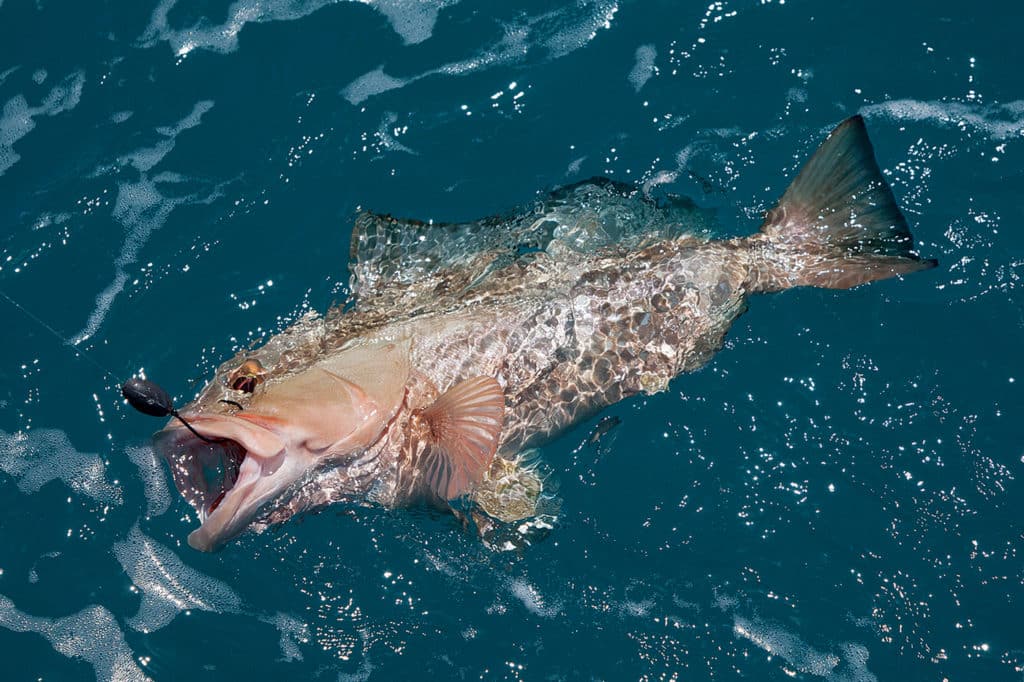
When mackerel aren’t cooperating, he’ll slow-troll for them with baits like pilchards, threadfins, cigar minnows or mullet. “Sometimes even the Spanish mackerel won’t bite on a flat, calm tide, so that’s when I troll,” he says. “The bigger tides and more water movement, the better, especially if baitfish schools are around.”
For tackle, he starts with a 7½‑foot medium-action spinner to target Spanish mackerel and false albacore. Kings necessitate 20-pound braid on 7-foot medium-heavy setups.
“I don’t need the seas to be calm, but I do want the clear water that comes with an east wind,” says Ames. “Otherwise, the mackerel will move west to find the cleaner water.”
Topwaters Around the Boulders
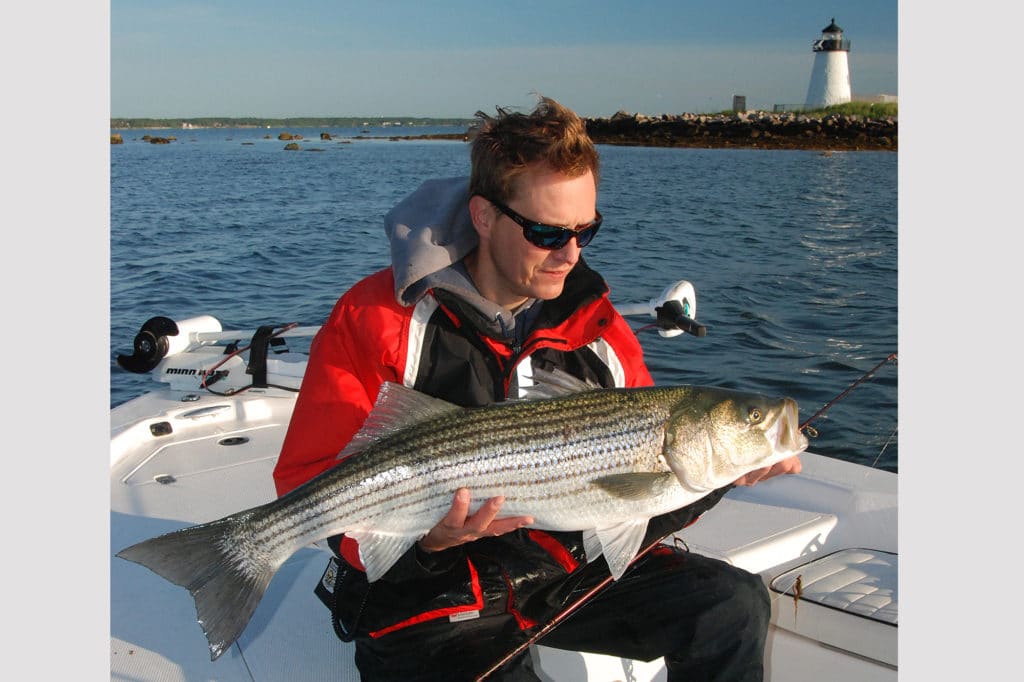
Among the cobbled bottom and giant boulders that form the rock gardens inside Buzzards Bay, Massachusetts, striped bass utilize perfect ambush hideouts to feed on baitfish that tumble with the water’s movement. And there’s not a more exciting way to target these first fish of the year than with topwater plugs, says Capt. Corey Pietraszek, a Cape Cod guide who fishes Buzzards Bay and the Elizabeth Islands.
“When it comes to the boulder fields, I want moving tide, incoming or outgoing, in 8 to 15 feet of water,” says Pietraszek. “Once the water temperatures hit 55 degrees, I’ll start checking the boulder fields every day. The striped bass can move in overnight, although the best temperatures are 60 to 65 degrees from May to Halloween.”
As the menhaden begin to show, Pietraszek likes to cast needlefish imitators, Zara Spooks and Gibbs Danny plugs on 7-foot medium-action gear with 40- to 50-pound braid.
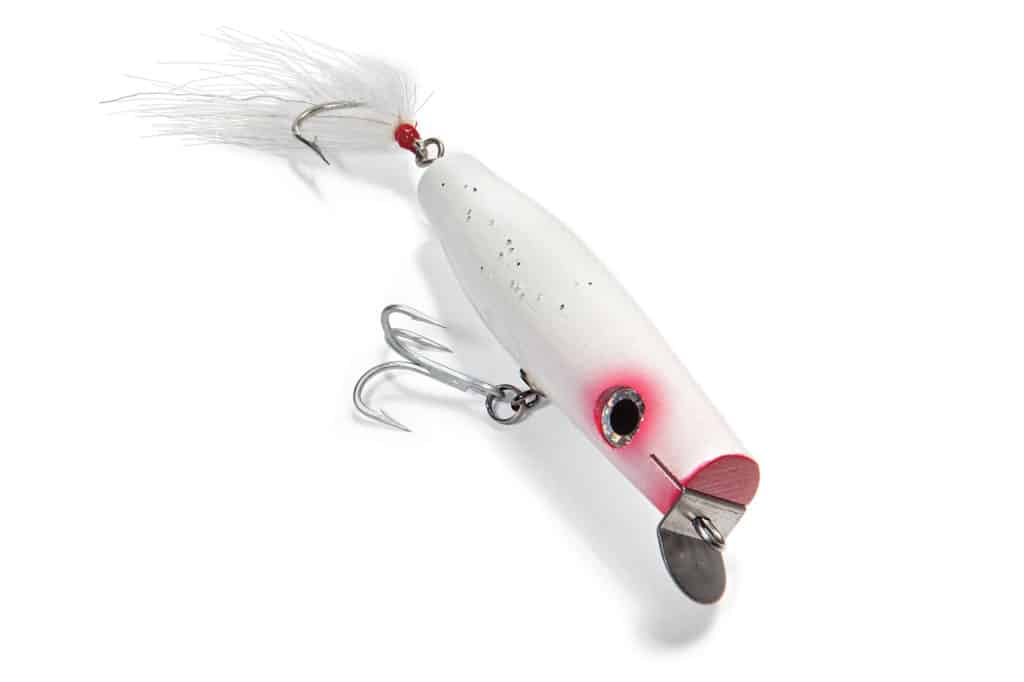
“I try to position my boat upwind of the boulders so that my anglers can make long casts with the wind at their backs,” he says. “Those first couple casts seem to hook the biggest fish of the day, so I want to make them count. After a few fish are landed on a plug, I’ll replace the trebles with new ones.”
Pietraszek has a couple of tips for anglers who want to fish the rocks right. He mentions that many anglers pass over prime striper territory by heading too close to shore, often spooking fish in the process. He also tends to forgo anchoring, preferring controlled drifts in his Contender 23.
“When fishing near exposed rocks, keep the rod tip high,” he says. “Try to keep as little line [as possible] in the water to prevent snags.” Anglers really have to wrench stripers out to prevent hang-ups. The high-tension contests test your hook-sets, so expect to lose a fish every now and then.








